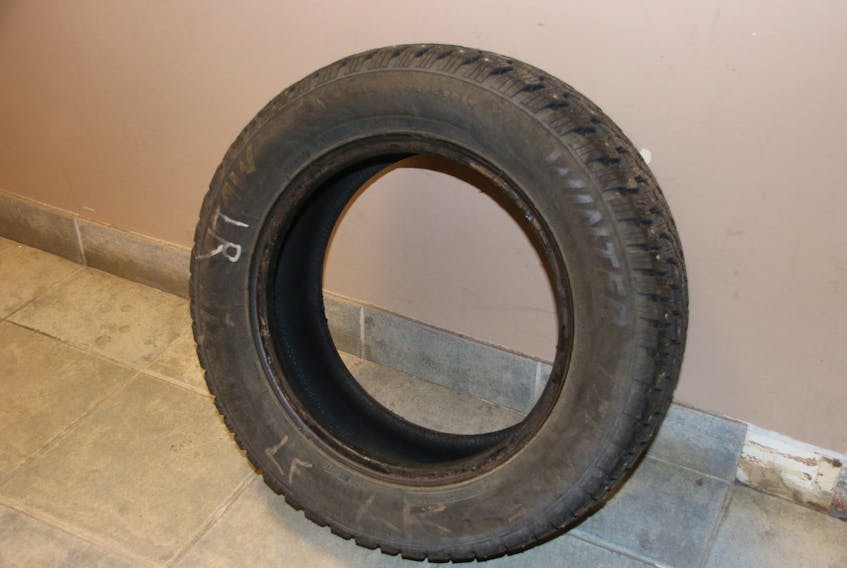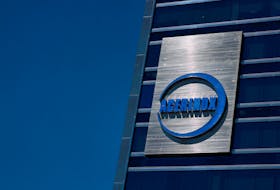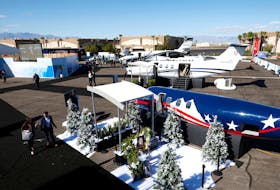An Alberta kiln-fuel study announced last week by Lafarge Canada is completely different than the one-year tire-burning pilot project the company has applied for at its plant near Brookfield, an official says.
“It’s different processes, it won’t be the same type of process at all,” Rob Cumming, environmental director at Lafarge, said of the study to determine the environmental benefits of introducing lower carbon fuels to its cement plant in Exshaw, Alta. “We are actually doing the same kind of research across Canada.”
The company last week announced that it is teaming with Queen’s University and the University of Calgary on a $2-million study at its plant located about 90 kilometres west of Calgary to research eight lower-carbon fuels, including rubber and tire-derived fuel, non-recyclable plastics, construction and renovation waste, carpets and textiles, shingles, and treated and non-treated wood products.
Cumming said the company estimates that each 20 per cent incremental replacement of natural gas at the Exshaw plant with lower carbon fuels could result in the elimination of nearly 75,000 tonnes per year of CO2 (carbon dioxide), a reduction that equates to taking 16,000 cars off the road annually.
Lafarge has already received provincial environmental approval in Nova Scotia for its pilot project to burn about 400,000 discarded tires in the kiln at its cement plant. The company has applied for an industrial approval for the project and will hear back from the Environment Department by early March.
“It’s the same concept,” Cumming said of the Brookfield pilot project and the Alberta study. “We get academic and other stakeholders to help us guide our development of these things to make sure they are safe and to get the results assessed by our academic partner.” In Nova Scotia, the academic partner is a Dalhousie University team led by Mark Gibson, an associate professor in the university’s civil and resource engineering department. Gibson has said in the past that tire-burning should improve plant emissions, basically replacing 15 per cent of the coal and pet coke burned as fuel.
Fred Blois said the Alberta study, which won’t be completed until December 2019, won’t help the cause of his citizens group that opposes tire burning at the Nova Scotia plant.
“This is going to make it much more difficult for us,” Blois said. “It’s (study) going down the road and just by the people involved in it, it gives it some legitimacy.”
Lafarge says 30-35 per cent of the fuel it burns in its kiln at the Brookfield plant already comes from lower-carbon sources. The scrap tire initiative would increase that to an industry-leading level of 50 per cent.
“We’ve already done some work in the lab with combustion tests that showed really positive results,” Cumming said. “We expect emissions to go down. This is why we are doing this very conscious next step, a one-year pilot. We’ll be getting results and sharing them with the public. We’re anticipating some emission reductions but we want to quantify that and confirm it.”
Blois and his group are more concerned with dioxins and furans, toxic particles that can be emitted from tire-burning. Blois said
the federal government and the Canadian Council of Ministers of the Environment agree that dioxins and furans “pose an unreasonable and otherwise unmanageable risk to the environment and to human health.”
Released into the environment, dioxins and furans can be transported by air and water current to locations 100 kilometres from their point of origin.
“When you burn chlorine, you automatically produce dioxins and furans,” Blois said. “The proof is there.”
The citizens group filed notice last August with the Nova Scotia Supreme Court for a review of the environment minister’s initial July decision to grant the pilot project environmental approval. That review will be heard in March. Meanwhile, a decision is still pending from Justice Denise Boudreau on whether to allow a toxicological expert to testify at the review on behalf of the citizens’ group. The company will also learn in early March the fate of its application to the province for industrial approval of the pilot project.
“Late summer or early fall is the soonest we’d be able to get a system built and up and running,” Cumming said of the $2 million in plant upgrades needed to support the pilot project. “We’ll be doing other work between now and then, doing baseline testing, the before and after type of thing. . . . The research team will be preparing evaluations, understanding our current process so that they can then better understand any changes that occur after the use of scrap tires and more accurately quantify the benefits we are expecting.”









